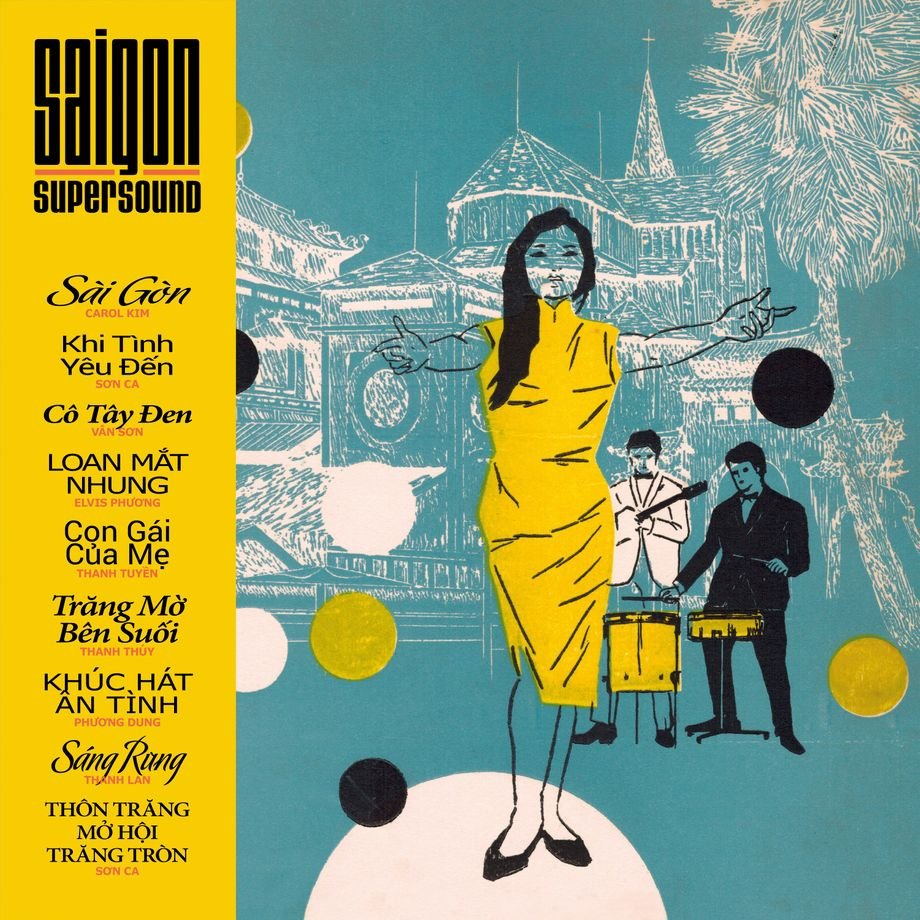 Image 1 of 1
Image 1 of 1


V/A 'Saigon Supersound 1964-75 Volume Two' (2LP)
Saigon Supersound Continues… to present more interesting tunes of a musical era that has long been obscured. With the well-received Volume 1, we are very delighted to dig deeper and share with you the beautiful music of a short but significant period in Vietnam‘s history.
Much like the country itself, the music of Vietnam has endured many twists. As the result of the Geneva Accords in 1954, Vietnam was divided into two. From the North, the Nationalist forces fought to reunite Vietnam as a Communist State, while the American troops backed the government of the South. This caused a mass migration of Northerners to the South, which includes many Tân Nhạc (Modern Music) singers and songwriters. Often characterized by its emotive, poetic and prolific personality, Tân Nhạc continued to freely develop in the South and progressively vacating from the influences of its main inspiration, French music. In the North, the Resistance music, or the so-called Nhạc Đỏ (Red Music), which promoted socialism, patriotism and anti-capitalism was the only genre allowed on national radio. Tân Nhạc was something new to the South Vietnamese repertoire. Between 1954–1960, the theme of hometown (quê hương) was a main inspiration for many songwriters such as Hoàng Thi Thơ, Lam Phương and Nguyễn Hữu Thiết. The 9th title of the compilation, “Thôn Trăng Mở Hội Trăng Tròn” showcases a variety of images that were often described in this genre: the harvest moon, playful children, old mother…
Saigon Supersound Continues… to present more interesting tunes of a musical era that has long been obscured. With the well-received Volume 1, we are very delighted to dig deeper and share with you the beautiful music of a short but significant period in Vietnam‘s history.
Much like the country itself, the music of Vietnam has endured many twists. As the result of the Geneva Accords in 1954, Vietnam was divided into two. From the North, the Nationalist forces fought to reunite Vietnam as a Communist State, while the American troops backed the government of the South. This caused a mass migration of Northerners to the South, which includes many Tân Nhạc (Modern Music) singers and songwriters. Often characterized by its emotive, poetic and prolific personality, Tân Nhạc continued to freely develop in the South and progressively vacating from the influences of its main inspiration, French music. In the North, the Resistance music, or the so-called Nhạc Đỏ (Red Music), which promoted socialism, patriotism and anti-capitalism was the only genre allowed on national radio. Tân Nhạc was something new to the South Vietnamese repertoire. Between 1954–1960, the theme of hometown (quê hương) was a main inspiration for many songwriters such as Hoàng Thi Thơ, Lam Phương and Nguyễn Hữu Thiết. The 9th title of the compilation, “Thôn Trăng Mở Hội Trăng Tròn” showcases a variety of images that were often described in this genre: the harvest moon, playful children, old mother…
